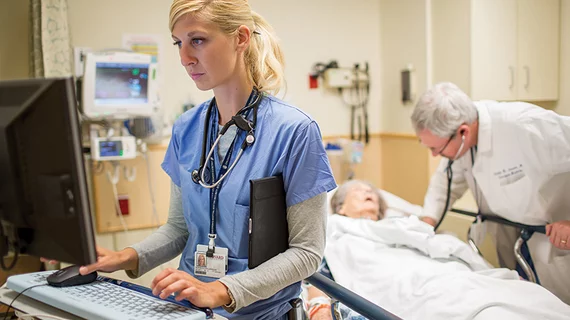Healthcare faces ‘pressing’ need to develop nonradiology nurses’ knowledge of interventional radiology
Healthcare’s reliance on minimally invasive interventional radiology procedures and specialists is only expected to keep growing. Yet a new study shows that nonradiology nurses have little exposure to IR during medical school, leaving them ill-equipped in clinical practice.
The findings come from face-to-face interviews with a small group of 10 Canadian nurses who have treated at least one IR patient but also work outside the radiology department. Five themes emerged from these discussions:
- Nursing curriculum contains no formal interventional radiology education.
- Many nurses lack knowledge of imaging modalities and IR procedures.
- Most nurses gain the knowledge they need through self-teaching.
- This IR knowledge gap hampers nurses from developing a trusted relationship with patients.
- Incomplete handoffs and miscommunication disrupt patient care.
“IR is a specialty that will continue expanding with the development and application of advanced technology and an ongoing valuing of minimally invasive procedures,” Andra Carley, CRN, RN, with Peterborough Regional Health Center in Ontario, Canada, and colleagues explained. “These findings reflect pressing professional development needs,” they wrote later.
For one, Carley et al. advocated for creating interventional radiology nursing specialty education. An undergraduate program could include technical content about using imaging modalities and a detailed understanding of IR procedures and opportunities to observe them.
Also, information about using procedural sedation, reasons for lab testing, identifying allergies, managing and troubleshooting equipment, and how to handle complications should all be included in education and resources.
Most of the respondents agreed that interventional radiology as a whole is somewhat unknown to those outside the field. The nurses said providers and caregivers need more exposure to IR, including the procedures that are performed, where they’re completed, imaging modalities used, and how such procedures are scheduled.
Part of achieving this, Carley and colleagues added, can be done through enhanced collaboration. Some nurses said they didn’t initially think to notify the IR department when patients have concerns about a procedure. Instead, they grabbed the nearest qualified physician.
And by not working with one another, miscommunication is all too common, resulting in patients not being prepared for procedures, delays following complications, and inefficiencies in the IR department, the authors noted.
Looking toward the future, the group said there is a “pressing need” to develop resources for nonradiology nurses and called on educational institutions and professional associations to help lead the charge.
“Addressing nonradiology nurses’ professional development needs centers on providing them with the information they need to care for IR patients,” the authors concluded. “We recommend beginning this process by creating opportunities for IR education."
Read the entire report published in the Journal of Radiology Nursing here.

